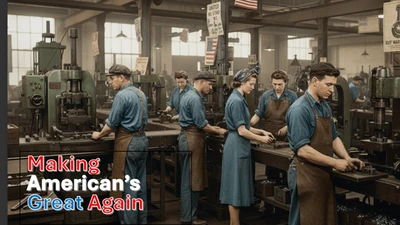The NAHB/Wells Fargo Housing Market Index (HMI), which measures builder confidence in the single-family housing market, indirectly impacts large corporate home builders like Main Street Renewal (Mainstreet) and Progress Residential, who focus on single-family rental (SFR) portfolios. While the HMI primarily reflects sentiment among builders of new homes, its indicators—current sales, future sales expectations, and buyer traffic—provide insights into housing market dynamics that affect SFR operators. For mature conservative investors, understanding these impacts is key to assessing the stability and income potential of investments in companies or REITs tied to SFRs. Below is an analysis of how the HMI, particularly at its July 2025 reading of 33, influences firms like Mainstreet and Progress, tailored to the priorities of capital preservation and income.Context: July 2025 HMI and Market Conditions
- HMI Reading: At 33, the HMI signals low builder confidence, driven by high mortgage rates (6%+), affordability challenges, and tariff-related cost uncertainties. Components include current sales (36), six-month sales expectations (43), and buyer traffic (20, a two-year low).
- Market Environment: High interest rates, inflation (1.2% rise from 15% tariffs), and material cost volatility (e.g., $9,200 per home from tariffs) are pressuring builders, with 38% cutting prices by 5% and 62% using sales incentives.
Impact on Large Corporate House Owners
- Acquisition Costs and Inventory Growth
- HMI Signal: Low buyer traffic (20) and weak sales (36) indicate reduced demand for new homes, pushing builders to cut prices and offer incentives. This creates opportunities for SFR operators like Mainstreet and Progress to acquire properties at lower costs, especially from distressed builders or overstocked developments.
- Impact: Lower acquisition costs could boost margins for SFR firms, as they purchase homes for rental portfolios at discounts. However, tariff-driven material costs ($9,200/home) may limit new construction supply, constraining inventory growth.
- Investor Consideration: For mature investors, this suggests potential upside in SFR REITs (e.g., Invitation Homes, AMH) if Mainstreet or Progress capitalize on discounted purchases. However, limited new home supply could cap portfolio expansion, impacting long-term rental income growth.
- Rental Demand and Pricing Power
- HMI Signal: High mortgage rates and affordability issues (80% of Americans see housing affordability as a problem) sideline buyers, increasing demand for rentals. The HMI’s low traffic score (20) reflects this, as fewer buyers enter the market.
- Impact: Mainstreet and Progress benefit from higher rental demand, as affordability challenges push consumers toward renting. Strong demand supports stable or rising rental rates, enhancing cash flows. However, if economic uncertainty (e.g., tariff-driven inflation) reduces tenant affordability, rent growth may slow.
- Investor Consideration: SFRs offer stable income, aligning with conservative priorities. Mature investors should favor firms with diversified portfolios in high-demand regions (e.g., Sun Belt markets) to mitigate local economic risks.
- Financing Costs and Leverage
- HMI Signal: High interest rates (91% of builders cite as a top challenge) raise borrowing costs for builders and SFR operators. The HMI’s weak sentiment reflects broader financing constraints, as elevated rates impact construction loans and property acquisitions.
- Impact: Mainstreet and Progress, which rely on debt to scale portfolios, face higher financing costs, potentially squeezing margins. However, their scale and access to capital markets (e.g., via securitized rental income) provide resilience compared to smaller builders.
- Investor Consideration: Mature investors should monitor debt levels in SFR firms. Companies with lower leverage or strong cash reserves (e.g., Progress’s $1.5B liquidity as of 2024) are safer bets for capital preservation.
- Policy and Tariff Risks
- HMI Signal: Tariff uncertainty (78% of builders report pricing difficulties) and regulatory shifts (e.g., Trump’s pause on 2021 IECC building codes) affect construction costs and market outlook. The HMI’s six-month expectations (43) suggest cautious optimism if trade policies stabilize.
- Impact: Tariffs increase costs for new homes, limiting supply and benefiting SFR firms by sustaining rental demand. Regulatory relief (e.g., relaxed building codes) could lower costs for Mainstreet and Progress if they build or renovate properties, but short-term tariff volatility may raise rehab costs.
- Investor Consideration: Conservative investors, wary of government overreach, should favor SFR firms with U.S.-centric operations to avoid tariff exposure. Policy tailwinds (e.g., deregulation) could enhance profitability, supporting dividend stability.
Specific Implications for Mainstreet and Progress
- Main Street Renewal: As a private SFR operator managing ~20,000 homes (2024 data), Mainstreet focuses on affordable rentals in markets like Texas and Florida. Low HMI readings signal opportunities to acquire distressed properties, but high material costs may raise renovation expenses, impacting margins. Its private structure limits transparency, so investors may prefer public REITs for better visibility.
- Progress Residential: Managing ~85,000 homes, Progress is a market leader with scale advantages. The HMI’s low buyer traffic supports strong rental demand, bolstering Progress’s cash flows. Its securitization strategy (e.g., $1B rental-backed bonds in 2024) mitigates financing risks, making it attractive for income-focused investors. However, tariff-driven cost increases could pressure capex budgets.
Conservative Investor Strategy
- Income Focus: SFR REITs like American Homes 4 Rent (AMH, ~3% yield) or Invitation Homes (INVH, ~3.2% yield) offer stable dividends, aligning with mature investors’ income needs. Mainstreet and Progress, if accessible via private funds, provide similar exposure but with less liquidity.
- Capital Preservation: Favor firms with low debt and diversified portfolios. Progress’s scale and liquidity make it a safer bet than smaller operators. Avoid overleveraged firms vulnerable to rate hikes.
- HMI Monitoring: A declining HMI (below 33) could signal deeper market weakness, increasing acquisition opportunities but also economic risks. An improving HMI (closer to 50) suggests stabilizing demand, potentially reducing rental growth but boosting property values.
- Policy Alignment: Conservative investors should prioritize U.S.-focused SFR firms to align with “America First” policies and avoid tariff risks. Deregulation tailwinds could enhance profitability, supporting long-term income.
Summary: The July 2025 HMI reading of 33 signals a weak housing market, benefiting Mainstreet and Progress by increasing rental demand and creating acquisition opportunities at lower costs. However, high interest rates and tariff-driven cost pressures (e.g., $9,200/home) challenge margins and inventory growth. Mature conservative investors should focus on SFR REITs or funds with strong balance sheets, diversified portfolios, and U.S.-centric operations for stable income and capital preservation. Monitor HMI trends and Powell’s Jackson Hole speech (August 22) for signals on rates and economic direction. Consult a financial advisor like Bob Rubin at Rubin Wealth Advisors for tailored SFR investment strategies.










